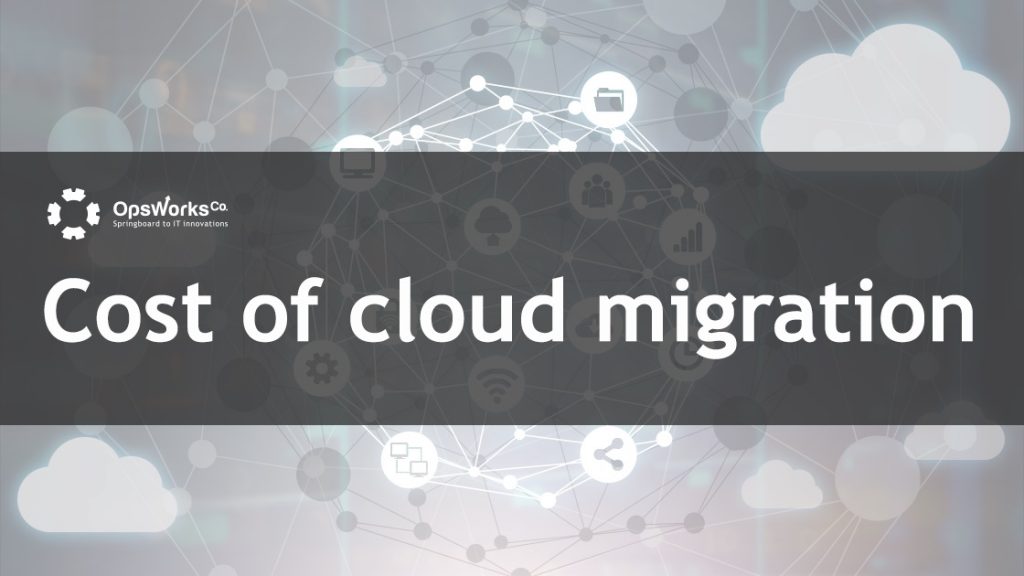If you ask a cloud provider representative how much it costs to migrate to the cloud, they would probably say that you rather save money when migrating to the cloud. But, if you came across a hardware vendor, they would have a different opinion. So, let’s find out why opinions differ and what you should know about cloud migration costs?
Why do Companies Trust the Cloud?
Cloud providers like Amazon, Microsoft, and Google offer customers to store their corporate data and applications safely. They provide various security tools like data encryption, antivirus software, multi-factor authentication, and others to prevent your sensitive files from being exposed.
As soon as you migrate to the cloud, you are no longer tied to a single place to store your data. Your team can access the data no matter the time or place. Aside from that, you can extend the storage and scale up your business.
The best part is lower expenses since cloud computing costs less than maintaining on-premise our servers and hiring an in-house team. Why? Firstly, you only pay for what you use; secondly, you’re free to choose the services and tools you can afford.
How Much Will You Spend on This?
You need to know that migrating a physical server to AWS or other clouds will cost you a different sum than you would’ve paid for cloud-to-cloud migration. No matter which type of migration, use cost calculators for Azure, AWS, or Google, depending on your cloud preference.
1. On-Premise to Cloud Migration Costs
The first step toward migrating a data center in an office to the virtual cloud is choosing an offline or online migration method. If you keep your corporate data on flash drives or disks, the cost of moving to the cloud starts from $25/month per instance.
In case you’re up for an online migration, it is at a minimum of $0.018 per hour for single-AZ in t2.micro instance type. Some providers offer opportunities for free migration. However, it depends on multiple factors: your current hardware, services, tools, and a chosen method of migration.
2. Cloud to Cloud Migration Costs
Step 1. Calculate the cost of services on your current cloud. How much do you spend on security, managing tools, VM, database, etc.?
Step 2. Add this amount of money to the sum you’ll spend on maintaining the same tools on the other cloud.
The cloud computing cost ranges from a few hundred dollars to several thousand dollars, depending on your infrastructure’s size. Usually, you pay for CPUs, the number of virtual machines, memory, storage type, etc.
This number varies since we all use multiple software at a different time. If you opt for AWS to Azure migration or vice versa, cloud computing cost will be almost the same.
Challenges of Cloud Migration
Most frequently, CEOs face the following challenges when migrating to the cloud: increased downtime, poor risk mitigation plans, incompatible OS, and no encryption key management. To avoid those issues and reduce the cloud computing cost, check the most effective solutions businesses have implemented.
Always include overheads and the money you will lose during downtime. To perform the benefit analysis of cloud computing cost, calculate how long your servers will be down. Then, multiply this number by your average rate per hour. This way, you won’t get hit with any unexpected charges.
Be ready to spend some time on cloud migration, as well. To move the whole server to the cloud, you may need around 1-4 months. The good news is that providers like AWS have already figured out how to cut this time.
Hidden Costs in Application Infrastructure
You already know all the benefits from migration to the could. But we have one uncovered that always attaches less importance, unfortunately.
So, for app components, you need to buy software licenses. Nowadays, the latter costs much more than their cloud counterparts. And it’s related to the fact that instead of the physical CPU, your information moves to virtual SSDs. Then, the price for hosting is incomparable with the price for the datacenter.
Besides, the cloud is more powerful. It’s faster, more reliable, and needs less human management than the actual data center that once again decreases overhead and eliminates delays.
What’s more, revenue could be affected by your servers going down. If you check how often it happens, you will be unpleasantly surprised as during this time, the productivity of your employee is equal to 0.
